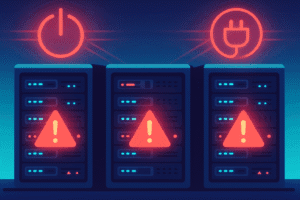How to Back Up Your Computer
Backing up your computer isn’t optional anymore. In an age of increasing cyberattacks, hardware failures, and accidental deletions, a solid backup strategy can save your digital life.
If you’ve ever lost family photos, work files, or important documents, you already know the pain. This guide will teach you how to back up your computer properly, using both local and cloud methods.
Why You Need to Back Up Your Computer
A backup is simply a copy of your data stored somewhere safe, separate from the original. Without it, you risk losing:
- Irreplaceable photos and videos
- Work documents and creative projects
- Software settings, system files, and licenses
According to a study by Backblaze, 20% of people have never backed up their computers—even though hard drive failure rates continue to rise.
Whether it’s theft, fire, or a ransomware attack, data loss can strike at any time. A backup system ensures you’re prepared.
Types of Backups: Choose What Works for You
There are three primary types of backups, and each has its own benefits.
1. Local Backup (External Drives)
External hard drives and SSDs are the most common backup solution.
Pros:
- Fast data transfer
- Complete control over your backups
- No internet required
Cons:
- Can fail or be lost in the same event as your PC (e.g., theft, fire)
Best practice: Use software like Time Machine (Mac) or File History (Windows) to schedule automatic daily backups.
2. Cloud Backup
Cloud storage services like Google Drive, Dropbox, OneDrive, or specialized tools like Backblaze and iDrive let you store data offsite.
Pros:
- Accessible from anywhere
- Automatic syncing and version control
- Safe from physical disasters
Cons:
- Requires internet
- Subscription costs for larger storage
Cloud backups are especially valuable for protecting files from ransomware attacks, since older versions can often be recovered.
3. Hybrid Backup (Best of Both)
The safest approach? Combine both methods. A local copy for speed, and a cloud copy for resilience.
Think of it as a 3-2-1 backup strategy:
- 3 copies of your data
- 2 different storage types
- 1 copy offsite
This is the gold standard for anyone who truly values their data.
How to Set Up a Reliable Backup System
Let’s walk through the steps of creating a foolproof system.
Step 1: Choose What to Back Up
Focus on what matters most:
- Personal files (documents, photos, videos)
- Project folders
- Application settings
- Your operating system (optional but useful)
You don’t always need to clone your entire drive—just the irreplaceable parts.
Step 2: Set Up an External Drive Backup
- Buy a reliable external drive (at least 1–2x your current disk space).
- Mac users: Use Time Machine (built-in).
- Windows users: Use File History or third-party software like Macrium Reflect or EaseUS Todo Backup.
- Set it to run daily or weekly, and keep the drive connected regularly.
Step 3: Enable Cloud Backup
Choose a trusted provider:
- Backblaze: Unlimited storage for $7/month per computer
- Google Drive: Great for file syncing
- iDrive: Offers backup for multiple devices
Install the backup app, sign in, and choose folders to protect. Most services run in the background and sync changes automatically.
Step 4: Test Your Backups
Don’t assume it’s working—verify:
- Restore a test file
- Check backup logs
- Confirm file version history
Bonus Tips to Keep Your Backups Secure
- Encrypt your backups (especially on external drives)
- Use strong passwords and two-factor authentication for cloud services
- Don’t leave external drives plugged in 24/7—they’re vulnerable to ransomware
If you’re handling sensitive data, look into end-to-end encryption services like SpiderOak One or Proton Drive.
Conclusion: Don’t Wait Until It’s Too Late
Backing up your computer is one of the most important digital habits you can build.
Protect your photos. Safeguard your projects. Defend your peace of mind.
It only takes a few minutes to set up, and could save you years of lost data and frustration.
“There are two kinds of people: those who’ve lost data and those who will.”
Take action today—future you will thank you.
Related Content
- Top 5 Essential Programs for Your New PC
- The Best Antivirus Tools for 2025
- How to Fix Your Freezing PC: A Quick Guide
Share this post:














Post Comment